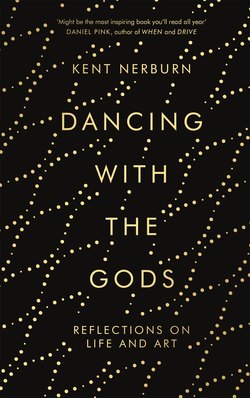Читать книгу Dancing with the Gods - Kent Nerburn - Страница 12
На сайте Литреса книга снята с продажи.
Оглавление3
Inspiration and Training
The essential responsibility of learning your craft
‘There are two men inside the artist, the poet and the craftsman. One is born a poet. One becomes a craftsman.’ Emile Zola
‘Be a good craftsman; it won’t stop you from being a genius.’ Pierre-Auguste Renoir
IF SOMEONE TELLS you there is but one way to create or one way to find your artistic voice, be wary. They may have a technique or method that works for them, and you should always listen to what they have to say – after all, the essence of being an artist is to be open to the full richness of the world around us. But if they say, ‘This is the way it must be done,’ listen with caution. Take their words as a reflection of their confidence in their own method of creation but don’t allow them to distort your own vision or control your own search for the wellspring of your art.
This is not to say that you should ignore the techniques and methods of others. Much good can be gained by putting yourself in the hands of a teacher who has a definite and specific way of creating. Though you may chafe at his or her methods, you will benefit greatly from giving yourself to them. You will learn the discipline of working against your own inclinations and open yourself to a new way of shaping the external world into a work of art.
After all, any teacher who has lived a long life in the arts has hard-won knowledge, and the lessons he or she has to teach will imprint your work for the better, even if you choose to take a different direction on your own artistic journey. The talent you need is to know what lessons to take and which to leave behind as you move forward on your own artistic path.
Many years ago I trained under a woodcarver who specialised in iconostases, or altar screens, for Orthodox churches. The iconostases he created were often twelve feet high and twenty feet long, and consisted entirely of intertwined stems and leaves done in a traditional Byzantine style. He had learned this craft as a child in his native Greece and had spent forty years perfecting his methods and techniques. His creations were impeccable.
Though he claimed he could do other kinds of works, he could not, because he was singularly lacking in artistic imagination. He was a craftsman – a brilliant craftsman – who could carve a perfectly smooth surface and cut a perfectly clean line in the middle of a stylised leaf such that the line, made without measurement, was exactly equidistant from either side of the leaf’s edge.
This may not sound like much, and in the scheme of what I dreamed of doing as a sculptor it was not. But in training with him I was forced to accept the mind-numbing discipline of carving leaf after leaf with unerring exactitude, though my heart dreamed of creating life-size human forms in the tradition of Donatello and Michelangelo, and I chafed under the limitations of his exacting demands. But unbeknownst to me I was gaining a rigour and discipline that, once learned, would undergird everything I would do in the future as a sculptor.
Because of this man and his training I could give exactly the right line and shape to an eyelid to create a feeling of sadness and moral complexity in the rendering of a human face. He had taught me nothing about embodying human emotions and expressions in wood, but his training had allowed me to have the technical control necessary to make the precise millimetre of cut that would make the difference between bringing something to life and merely making it accurate.
Without that man’s harsh training – and it was harsh, to the point of him threatening to break my fingers if I did not do things the way he wanted – I would never have been able to bring the visions to life that I held inside me once I was set free to create on my own. What he was doing was putting skills in my hands that would allow me to give voice to the art in my heart.
As young artists we are too quick to want to run to the well of pure creative expression. We do not want to subject ourselves to training that seems to run contrary to the creative fire that burns inside us. Whether it be technical discipline and exacting craftsmanship, such as I was subjected to by my carving teacher, or techniques demanded by a voice coach or dancing instructor or writing mentor who insists that we follow a certain course of study, the training we are getting is playing a crucial role in helping us develop our own unique artistic voice. It is giving us a foundation on which to build, and helping us develop as artists by making us realise what we are not.
Leonardo da Vinci once said it is a poor teacher whose students do not surpass the master. Your goal as a creator is to make your mentors into good teachers by surpassing them on your artistic journey. Just remember to thank them, with your words, with your art, with your acknowledgements. They let you stand on their shoulders, as they stood on the shoulders of those before them. Whether they gently lifted you down and sent you on your way, or you leapt before they thought you were ready, they gave you the gift of their experience.
It is up to you to use it, to honour it, and, ultimately, to pass it on.
